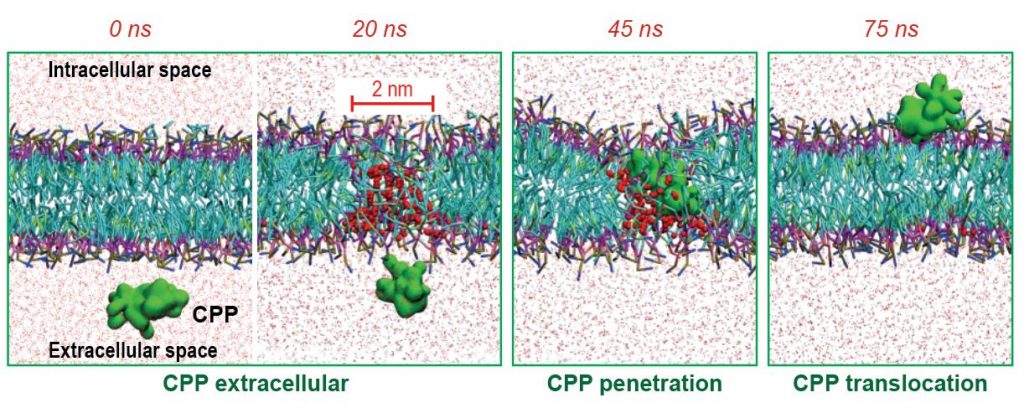We study the uptake mechanisms of cell-penetrating peptides (CPPs) and physiological proteins bearing CPP sequences such as homeoproteins.

Cell-penetrating peptides (CPPs) allow the intracellular delivery of cargo molecules that are hooked to them. They are used in biology and medicine for therapeutic or research purposes. CPPs are taken up by cells by direct translocation across the plasma membrane and by endocytosis, the two processes occurring concomitantly. CPPs can be found in anti-cancer and anti-microbial peptides but also in important signaling proteins such as homeoproteins. Despite their potential practical applications, the mechanisms of CPP entry inside cells are ill-defined and even controversial. The current focus of our laboratory is to characterize the mechanism of CPP cell entry via direct translocation or via endocytosis and how they escape endosomes when they use this later entry route. We also investigate how physiological molecules that naturally bear cell-penetrating sequences, such as homeoproteins, enter cells.
This movie summarizes our recent findings on CPP cellular uptake.
Please consult our research page for further details on our projects and check out our news for our latest findings.